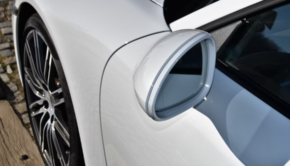How ‘Black Box’ insurance technology has evolved
Over the last few years insurers have promoted the black box to young first-time drivers, and for good reason; the telematics system has a range of benefits for new drivers hitting the road. In the UK, there are over 850,000 active black box policies and here we’ve taken a look at how technology has changed over the years.
Progression of the black box
The Digital Insurer notes that the UK implemented telematics on a commercial level back in the early 2000s. When it was launched, it was targeted at those drivers who have very low mileage. However, the evolution of smartphone technology has opened the door to develop telematics further and in 2010, the product was relaunched but with a different target audience – young drivers.
In 2018, 37% of 17-20-year olds held a full driver’s licence and therefore they would likely have taken out car insurance for their first car. As young and first-time drivers haven’t built up a case for lower insurance prices with good driving and no marks on their licence, they can expect to pay much more than the average motorist for car insurance. This is where the black box can help.
However, telematics has progressed further in recent years, with more insurers extending the audience of the product to ages as high as 98 (although some have no upper age limit at all!)
Is NCB still a bonus?
When getting a quote for a new insurance policy previously, your no claims bonus (NCB) – how many years you have gone without having an accident – was a shining testimony to your good driving. However, while this is still the case, insurance companies are now giving new incentives to reduce the price that you pay for your policy – a bonus for everyone.
With a black box, the insurer can instead see your speed, the time of day you drive and how fast and hard you accelerate and brake and in return for good driving, they can offer you a lower premium.
Risk and fraud prevention
A study has found that with the rise of black box telematics among young drivers, casualties have also reduced – with research from LexisNexis Risk Solutions noting that road casualties for drivers aged 17-19 have fallen by 31% over six years. The system no longer solely analyses driving style, but is increasingly being used to spot accidents and react to them quickly, helping to improve the claims handling process.
Some insurers have even said the technology has helped to reduce fraudulent incidents. Helping to identify some drivers who drive around a roundabout multiple times looking for a victim that they crash into before filing a whiplash claim.
How it works
Once the black box is installed and you hit the road, your driving behaviour is monitored – measuring speed, acceleration, braking and the time of day you drive. It is also fitted with GPS to observe what road types you use.
If you’re wondering how soon you may see a discount on your policy, telematics insurance provider WiseDriving, for example, rewards you throughout your policy. The black box monitors how you behave on the road and your driving score is reviewed after the first 60 days to determine whether your score has improved.
You could be entitled to a refund if you have a good score, however, if your score has reduced, you may face having additional premiums to pay. This repeats every 30 days through the policy – meaning you determine how much you pay.
Black box technology has come a long way since it launched, but it seems the goal has always been the same: to help drivers get a reduced premium.
















